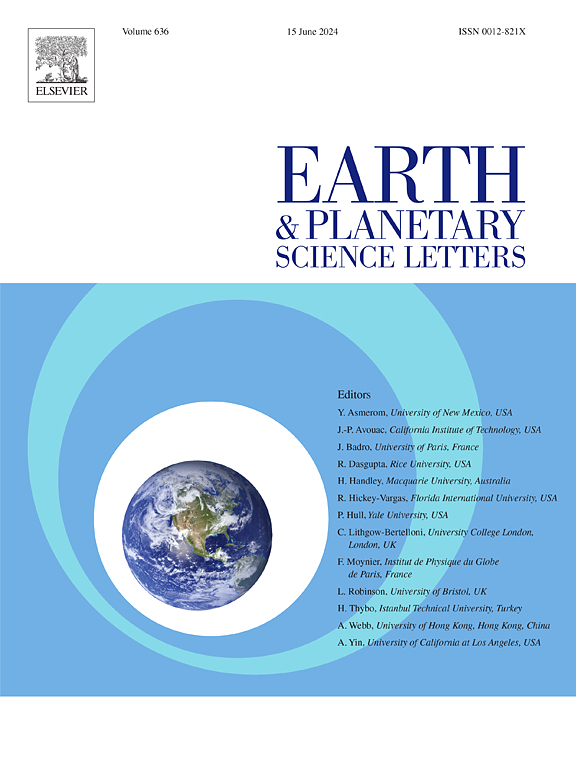Dual clumped isotopes reveal an out-of-equilibrium state in shallow-water carbonate sediments on Great Bahama Bank
IF 4.8
1区 地球科学
Q1 GEOCHEMISTRY & GEOPHYSICS
引用次数: 0
Abstract
While non-skeletal carbonate grains and muds precipitated on shallow-water platforms have been widely used to reconstruct past ocean temperatures and chemistry, the question remains as to what degree the geochemical signatures of carbonate sediments are in equilibrium with their original environments. To evaluate the extent of equilibrium, we have applied the dual clumped isotope proxy (Δ47 and Δ48) to surface sediments (aragonite > 90 %, n = 150) ranging from mudstones (< 63 μm) to non-skeletal grainstones from the Great Bahama Bank. While there is no statistical difference in the mean Δ47 values of the various facies, there are very large ranges of Δ47 values within each type (∼ 0.1 ‰) equivalent to a temperature uncertainty of 25 °C. Our Δ48 data reveals an out-of-equilibrium state where the muddy sediments have more positive values than the equilibrium, while the grainy facies are more negative. The positive Δ48 disequilibrium in the muds is proposed to be a result of the photosynthetic removal of CO2 caused by the activity of cyanobacteria turns promotes the precipitation of calcium carbonate in the water column (whitings area). In contrast, the grainstones, that are mainly composed of peloids, show a negative Δ48 disequilibrium resulting from the CO2 absorption by a complex mixture of biogeochemical processes. Our findings highlight the importance of kinetic processes in shaping non-skeletal carbonate factories and defining their geochemistry.
求助全文
约1分钟内获得全文
求助全文
来源期刊

Earth and Planetary Science Letters
地学-地球化学与地球物理
CiteScore
10.30
自引率
5.70%
发文量
475
审稿时长
2.8 months
期刊介绍:
Earth and Planetary Science Letters (EPSL) is a leading journal for researchers across the entire Earth and planetary sciences community. It publishes concise, exciting, high-impact articles ("Letters") of broad interest. Its focus is on physical and chemical processes, the evolution and general properties of the Earth and planets - from their deep interiors to their atmospheres. EPSL also includes a Frontiers section, featuring invited high-profile synthesis articles by leading experts on timely topics to bring cutting-edge research to the wider community.
 求助内容:
求助内容: 应助结果提醒方式:
应助结果提醒方式:


